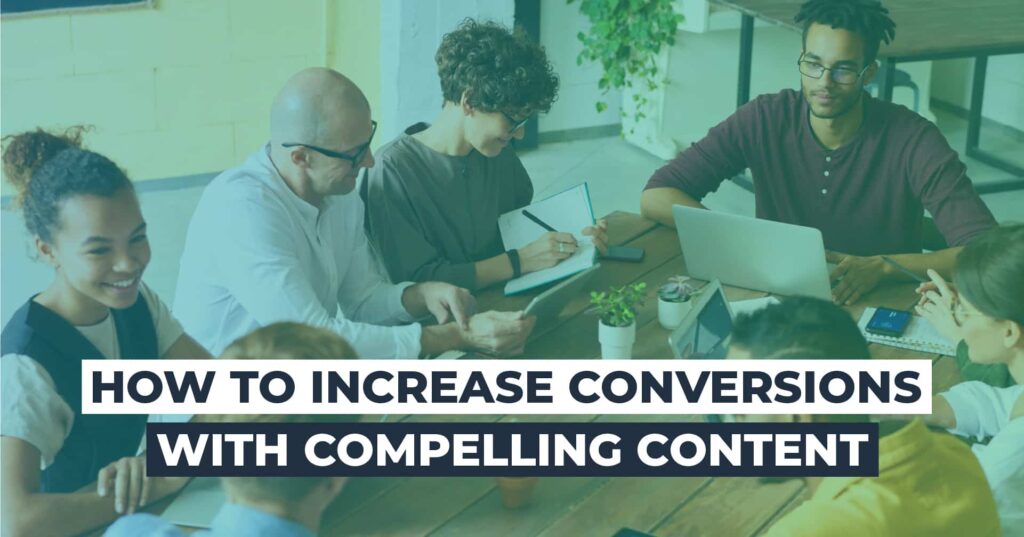Every ecommerce business is looking for that magic ingredient that catches a potential customer’s attention, draws them to a product page, and convinces them to hit that buy button. Do you know what types of digital content increase conversions for your brand? Have you explored some of the new tools that make it easier to create more compelling content? If not, this article is for you!
Key Takeaways
- Content that contains Images are far more compelling than text alone, and videos are even more compelling.
- Create content that answers a question and creates an emotional response.
- Don’t try to be an expert with a topic you have no experience with, just to optimize for search engines.
- AI and web developer tools can make it easier to create compelling content, but the process starts with original content.
Types of Digital Content
Every word and image on the internet is considered content, but today we’re concentrating on the words and images that represent your business, your brand, and your products. These include product descriptions, product videos, virtual try-ons, how-to videos, product reviews, emails, SMS messaging, home page, landing pages, automated product suggestions, digital ads, blog posts, podcasts, affiliate content, social media posts, white papers, thought leadership articles, testimonials, case studies, newsletters, contests, giveaways, referral programs — and the list goes on.
Some forms of content will fit your products better than others, so how do you know what makes compelling content for your brand? We have a few suggestions.
Start with What You Know
Don’t try to be an expert just for the search engine traffic if you don’t have first-hand experience with the topic. Start with what you know best: your products. Identify the types of consumers that will be most interested in them. Who are they? What struggles do they face? How will your product help them? Then test different ways to communicate your product’s features and benefits to that audience. Once you’ve got that down, you can branch out to other topics you know will interest them — because you know your customers, right?
Read the Room
Tailor your content to the medium, the shopping channel, and your intended audience. In other words, give shoppers what they’re looking for, when they’re looking for it.
- On your website or shopping channel, communicate brand values, and highlight new or bestselling products and current promotions.
- On your product pages, thorough product descriptions, helpful product photography, sizing guides and video demonstrations are all good places to start.
- Visitors to your blog are looking to dig deeper into a topic, so don’t disappoint them with shallow, AI-generated answers.
- Digital ads and social media content needs to quickly make an emotional connection with the viewer.
Answer a Question
Every byte of content you produce should help potential customers feel more comfortable about purchasing your product and engaging with your brand. We all have questions that need to be answered before we hit the buy button. How does it work? How does it fit? How soon will it ship? Is this a fair price? Can I return it? What problem does it solve? Why should I trust this business? If your content doesn’t provide any valuable information, why produce it? Here’s an example from ShipMonk’s website.
Don’t Just Tell Me, Show Me
We all know a picture is worth 1,000 words, but did you know that social media posts with videos get twice as much engagement than those with a still image? That an infographic can increase traffic by 12%? That a tweet with an image is 35% to be shared. Or that adding a video to an ecommerce landing page can increase conversion rates by up to 80%? Social proof, such as 5-star reviews, customer testimonials, and case studies, are also highly influential to prospective buyers.
All that said, original content is expensive to produce. There are, however, a growing number of tools that can help make your original content more compelling and make the most of your marketing dollars.
Content Creation Tools
Whenever possible, original product photography, videos, and copy are best, because this is the content that will differentiate your products and set the tone for your brand. If you start with excellent product photography and original text, you can use AI tools to make that content more compelling and work harder for you.
Enhanced Photography
As one example, Google is introducing Product Studio, a suite of AI-powered tools for members of its Merchant Center or through its apps on Shopify. These tools can help you edit photos to remove backgrounds, stage your product in a lifelike setting, or create a 3D-image from a series of still images. Other photo editing tools offer similar capabilities. A spinning shoe might not tell a customer much more than a still image, but it may get more clicks.
Video Maker Tools
There are a number of video maker tools that can help you produce videos using the content you already have. You may start with product photography and/or original text, and can add animation, music, voice-over audio and captions that describe product benefits or how to use it in greater detail.
AI-generated Text
There is no substitute for original content, but AI tools can speed up the writing process by a single piece of original text, such as a social media post and writing the caption, or repurposing it into a blog post, landing page or digital ad. AI tools can also save hours on researching a topic or competitive landscape.
Web Developer Tools
Make sure you are getting the most out of your product pages, whether on your website or shopping channels. Third party tools that automatically suggest similar products, curate products for upselling, or offer quick exchanges, can increase average order value and reduce returns. Tools such as Unbounce can identify problems with navigation, landing page content, or cumbersome checkout processes.
Compelling Reasons
As you can see, there are plenty of compelling reasons to improve your brand’s content, and new tools are being developed every day to make it easier. By testing different types of content and tracking conversion rates you can determine which channels and what types of content work best for your brand. There is no down side to optimizing your marketing spend.
If You Found That Helpful, You May Find These Articles Interesting!
How to Boost Your Ecommerce Conversion Rate
Ecommerce Customer Acquisition Tips & Tactics
Top Ecommerce Metrics to Track





